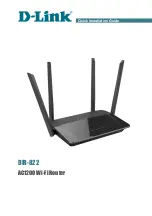
106
Performing Switch Administration
Information About Performing Switch Administration
NTP avoids synchronizing to a device whose time might not be accurate by never synchronizing to a device that is not
synchronized. NTP also compares the time reported by several devices and does not synchronize to a device whose time
is significantly different than the others, even if its stratum is lower.
The communications between devices running NTP (known as
associations
) are usually statically configured; each device
is given the IP address of all devices with which it should form associations. Accurate timekeeping is possible by
exchanging NTP messages between each pair of devices with an association. However, in a LAN environment, NTP can
be configured to use IP broadcast messages instead. This alternative reduces configuration complexity because each
device can simply be configured to send or receive broadcast messages. However, in that case, information flow is
one-way only.
The time kept on a device is a critical resource; you should use the security features of NTP to avoid the accidental or
malicious setting of an incorrect time. Two mechanisms are available: an access list-based restriction scheme and an
encrypted authentication mechanism.
Cisco’s implementation of NTP does not support stratum 1 service; it is not possible to connect to a radio or atomic clock.
We recommend that the time service for your network be derived from the public NTP servers available on the IP Internet.
shows a typical network example using NTP. Switch A is the NTP master, with Switches B, C, and
D configured in NTP server mode, in server association with Switch A. Switch E is configured as an NTP peer to the
upstream and downstream switches, Switch B and Switch F.
Figure 14
Typical NTP Network Configuration
If the network is isolated from the Internet, Cisco’s implementation of NTP allows a device to act as if it is synchronized
through NTP, when in fact it has learned the time by using other means. Other devices then synchronize to that device
through NTP.
Switch F
Switch A
Workstations
Workstations
Local
workgroup
servers
101349
Switch B
Switch E
Switch C
Switch D
Summary of Contents for IE 4000
Page 12: ...8 Configuration Overview Default Settings After Initial Switch Configuration ...
Page 52: ...48 Configuring Interfaces Monitoring and Maintaining the Interfaces ...
Page 108: ...104 Configuring Switch Clusters Additional References ...
Page 128: ...124 Performing Switch Administration Additional References ...
Page 130: ...126 Configuring PTP ...
Page 140: ...136 Configuring CIP Additional References ...
Page 146: ...142 Configuring SDM Templates Configuration Examples for Configuring SDM Templates ...
Page 192: ...188 Configuring Switch Based Authentication Additional References ...
Page 244: ...240 Configuring IEEE 802 1x Port Based Authentication Additional References ...
Page 298: ...294 Configuring VLANs Additional References ...
Page 336: ...332 Configuring STP Additional References ...
Page 408: ...404 Configuring DHCP Additional References ...
Page 450: ...446 Configuring IGMP Snooping and MVR Additional References ...
Page 490: ...486 Configuring SPAN and RSPAN Additional References ...
Page 502: ...498 Configuring Layer 2 NAT ...
Page 770: ...766 Configuring IPv6 MLD Snooping Related Documents ...
Page 930: ...926 Configuring IP Unicast Routing Related Documents ...
Page 976: ...972 Configuring Cisco IOS IP SLAs Operations Additional References ...
Page 978: ...974 Dying Gasp ...
Page 990: ...986 Configuring Enhanced Object Tracking Monitoring Enhanced Object Tracking ...
Page 994: ...990 Configuring MODBUS TCP Displaying MODBUS TCP Information ...
Page 996: ...992 Ethernet CFM ...
Page 1066: ...1062 Using an SD Card SD Card Alarms ...
















































